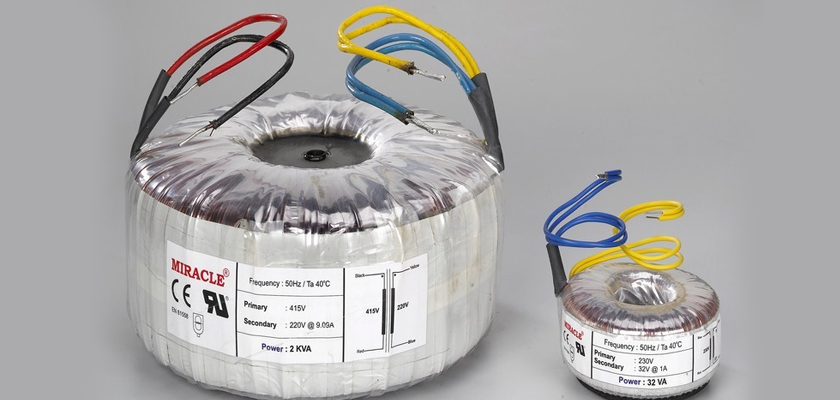Inductors are very important electronic components that are designed to store energy and ensure low core losses to permit efficient power conversion in different electrical applications. However, as easy as it may sound, designing an inductor is not an easy job. There are various factors that need to be considered while designing a powerful inductor. Miracle Electronics is one leading inductor manufacturer who carefully designs products keeping in mind all the possible issues and requirements of concern. Apart from inductors, we also manufacture a wide range of best-quality toroidal, medical isolation, audio output, three phase, audio line matching, EI, UI, SMPS, and power transformers in India. Let us now see the most important considerations that professionals like us use to boost up inductor design.
Inductor type
Unshielded inductors can cause issues when the windings magnetically couple with neighbouring components and conductor traces. This is why magnetically shielded inductors must be used. Also, you must make sure that circuit boards are not above the component; and traces aren’t under the components. This will place an air gap between the components, thus preventing magnetic coupling.
Inductance value
Inductors are basically used to reduce the amount of power loss within an application. And, these inductors are characterized by their inductance value, which is the ratio of the voltage to the rate of change of current. The inductance value of inductors generally ranges between 1 µH to 1H. This value is very important as it is connected with the ripple current, the unwanted residual DC current output, which helps to understand the core loss. When the ripple current is higher, the inductance value will be lower, and vice-versa. Understanding this theory, one can be in a better position to minimize power losses.
DC resistance
DC resistance determines the wire heating losses; and it is very important to use inductors with least resistance. However, many applications require small sized inductors with wires having small diameters that increase this resistance. In such cases, resistance must be minimized and power storage capabilities must be retained. And, low DC resistance can be achieved with minimal temperature rise.
Switching frequency
Integrated Circuits that are generally found in the market have a switching frequency ranging between 20 kHz to 2 MHz. But, there are regulators that have a switching frequency ranging between only 30 to 55 kHz. Therefore, to ensure high switching frequency levels, you must use certain types of materials like ferrite, powdered iron, and specialty iron alloyed powders to ensure that the required frequency can be met. Ferrite and powdered iron help to acquire switching frequencies between 100 to 1000 kHz, while specialty iron alloyed powders help for switching frequencies greater than 1000 kHz.
Inductor current ratings
With simulation software provided by manufacturers, inductor loads of the particular inductor can be calculated. Also, the ripple current load and DC current load can be calculated with this software. However, there is no standard accepted value for any inductor currents. Therefore, to avoid misinterpretations, it is better to understand the data sheet specifications.
Considering these few elements can ensure long-lasting performance of your inductors. And, if you are looking for the best quality inductors for your applications, you can always approach Miracle Electronics. We also undertake requests for custom design and development of inductors, suited to your particular application.




